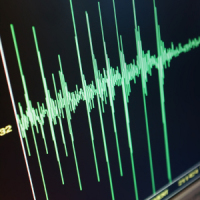Detecting earthquakes is important as earthquakes are not isolated to a single moment in time. There are aftershocks and often there are also telltale rumbles beforehand. The problem is that detecting these warning signs is difficult and expensive, and even if the possibility of a major quake is successfully detected, there’s often not much time to get the necessary information out to the general public before it hits.

Detecting Earthquakes Using Devices
Researchers at Stanford University had a brilliant idea. Most modern laptops and mobile computing devices have built-in accelerometers. Your iPhone knows when to switch from portrait view to landscape because it can sense movement. If you accidentally drop your shiny new laptop the internal accelerometer senses the sudden freefall and switches off the hard drive to reduce damage. These accelerometers are little more than motion detectors, and they’re effectively connected to the internet a lot of the time, so would it be possible to use the millions of devices we switch on every day as part of a network used in detecting earthquakes?
Is QCN the Answer to Detecting Earthquakes?
Early indications are that the answer is yes. At the moment Stanford’s Quake-Catcher Network includes only a thousand or so devices so the data it can collect is limited, but the idea does seem to work. QCN has successfully detected local shocks relating to a number of significant earthquakes around the globe.
Obviously a ‘tremor’ reported by one laptop might just be caused by a passer-by bumping the table or a slamming door, but if a signal is reported by many devices across a wide and coherent area, it’s more likely to be the sign of seismic activity. There are other challenges, like ensuring that the time kept by a single device matches up with the rest of the network and establishing where each node is at a given time, but with the permission of the device owner these are fairly easy to track.
Not all mobile internet devices are supported by the QCN team (yet) but if you have a reasonably new laptop you’ll probably be able to download the software and make it a part of the Quake-Catcher team. It won’t cost anything except idle CPU time.
QCN is a long way from providing the detailed seismological information an early warning system really needs but it is a step in the right direction. If enough people get involved and the network expands to include just a small percentage of the millions of possible nodes around the world it really could make a difference when the next super-quake comes around. It’s not there yet but it could be the start of an affordable global earthquake warning system that can be used in detecting earthquakes.
